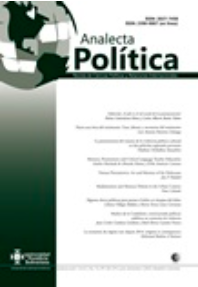Tomasz Pietrasiewicz: Arte y memoria del Holocausto
Contenido principal del artículo
Resumen
Este artículo trata el tema del arte y la memoria posteriores al Holocausto, en las obras artísticas de Tomasz Pietrasiewicz: un director de teatro y animador cultural. Se centra en dos ejes. El primero es el contexto en el que funciona su “teatro de memoria”, y gira alrededor de los factores culturales que dan forma a la memoria de las personas habitantes de Lublin a comienzos del siglo XXI y finales del siglo XX. El segundo eje está relacionado con el arte y la condición del artista: el lenguaje y los medios de expresión que usa, el porqué de sus acciones; ¿por qué decidió responsabilizarse por la trágica historia de la ciudad? El texto tiene seis partes: la primera describe el origen del teatro; la segunda explica la noción “islas de tiempo” como herramienta de interpretación; la tercera parte presenta las semióticas urbanas de Władysław Panas, la cuarta muestra una descripción del proyecto “utópico”: “Lublin. 43 thousands”, que se entiende como una maquinaria universal de memoria. La quinta parte tiene que ver con los misterios e instalaciones, entendidos como la arqueología de la memoria, y la sexta parte trata la responsabilidad del artista.
Referencias
Ankersmit, F. R. (2001). The Postmodernist “Privatization” of the Past. In: Ankersmit, F. (Ed.) Historical Representation (pp. 149-175). Stanford: Stanford University Press.
Assmann, J. (1995). Collective memory and cultural identity. New German Critique, 65, 125-133.
Buber, M. (1999). Gog and Magog: A Novel. New York: Syracuse University Press.
Hudzik, J. P. (2011). Misterium pamięci. O prawdzie poznania i prawdzie świadectwa Zagłady. In: J. P. Hudzik. (Ed.) Prawda i teoria (pp. 68-98). Warszawa: Scholar.
Jung, C. G. (1971). On the Relation of Analytical Psychology to Poetry. In: Jung, C. G (Ed.). The Spirit in Man, Art, and Literature (pp. 65-83). Princeton: Princeton University Press.
Klein, K. L. (2000). On the Emergence of Memory in Historical Discourse. Representations, 69, 127-150.
Lévinas, E. (2000). Witnessing and Ethics. In: Lévinas, E. God, Death, and Time (pp. 198- 201). Stanford: Stanford University Press.
Panas, W. (2008). Magiczne miasto. Scriptores. Pismo Ośrodka „Brama Grodzka - Teatr NN”, 33, 160-174.
Panas, W. (2015). The Eye of the Tzaddik. Lublin: Warsztaty Kultury.
Pietrasiewicz, T. (2008). Kręgi pamięci, Circles of Memory. Lublin: Ośrodek Brama Grodzka - Teatr NN.
Pietrasiewicz, T. (2017). The Theatre of Memory by the NN Theatre. Lublin: Ośrodek Brama Grodzka Teatr NN.
Plato (1921). Theaetetus. In: (Harold, F. trans.) Plato in Twelve Volumes. Cambridge, MA: Harvard University Press, London: William Heinemann Ltd. Retrieved from http:// www.perseus.tufts.edu/hopper/text?doc=Perseus%3Atext%3A1999.01.0172%3Ate xt%3DTheaet.%3Asection%3D191d
Scholem, G. (1941). Major trends in Jewish mysticism. Jerusalem: Schocken.
Stone, D. (2015). The Holocaust and Historical Methodology. New York, Oxford: Berghahn Books.
Zeidler-Janiszewska, A. (2010). Memory of the Shoah. Contemporary representations. Warszawa: Kultura Współczesna.






